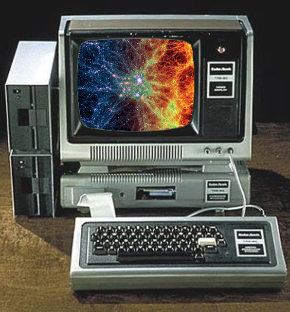Big start for new computer
 Australia’s newest supercomputer is off to a running start, producing a highly detailed image of a supernova remnant on its first day of operation.
Australia’s newest supercomputer is off to a running start, producing a highly detailed image of a supernova remnant on its first day of operation.
The supercomputer ‘Setonix’ at the Pawsey Supercomputing Research Centre produced the supernova remnant image immediately after it was made available to researchers, using data collected with CSIRO’s ASKAP radio telescope.
Within 24 hours of accessing the first stage of Pawsey’s new Setonix system, CSIRO’s ASKAP science data processing team began integrating their processing pipeline into the new system.
Setonix - named after Western Australia’s favourite animal, the quokka (Setonix brachyurus) - is a key part of a $70 million capital upgrade of the Pawsey Centre.
The new supercomputer is being installed in two stages. The first stage is underway, and the second stage is expected to be completed later this year.
Dr Pascal Elahi, Pawsey’s supercomputing applications specialist, said deploying this first phase of Setonix has increased the computing power of the Pawsey Centre by 45 per cent.
“Processing data from ASKAP’s astronomy surveys is a great way to stress-test the Setonix system and see what is possible,” Dr Elahi says.
While Setonix is ramping up to full operations, so is ASKAP, which is currently wrapping up a series of pilot surveys and will soon undertake even larger and deeper surveys of the sky. Setonix will be used to process the data collected by ASKAP.
Dr Wasim Raja, a researcher on CSIRO’s ASKAP team, said the supernova remnant’s dataset was selected to test the processing software on Setonix, given the challenges involved in imaging such a complex object.
“The speed at which we reproduced our current workflows is a good sign as we look to improve and optimise them to fully exploit Setonix’s capabilities,” Dr Raja said.
“Setonix’s large, shared memory will allow us to use more of our software features and further enhance the quality of our images. This means we will be able to unearth more from the ASKAP data.
“We look forward to working together with colleagues at the Pawsey Centre, who were pivotal to this success, as we continue integrating the complete processing pipelines on Setonix.”
When fully operational, Setonix will be up to 30 times more powerful than Pawsey’s earlier Galaxy and Magnus systems combined.
This will allow for more processing of the vast amounts of data coming in from many projects, and more science will be achieved in a fraction of the time.








 Print
Print